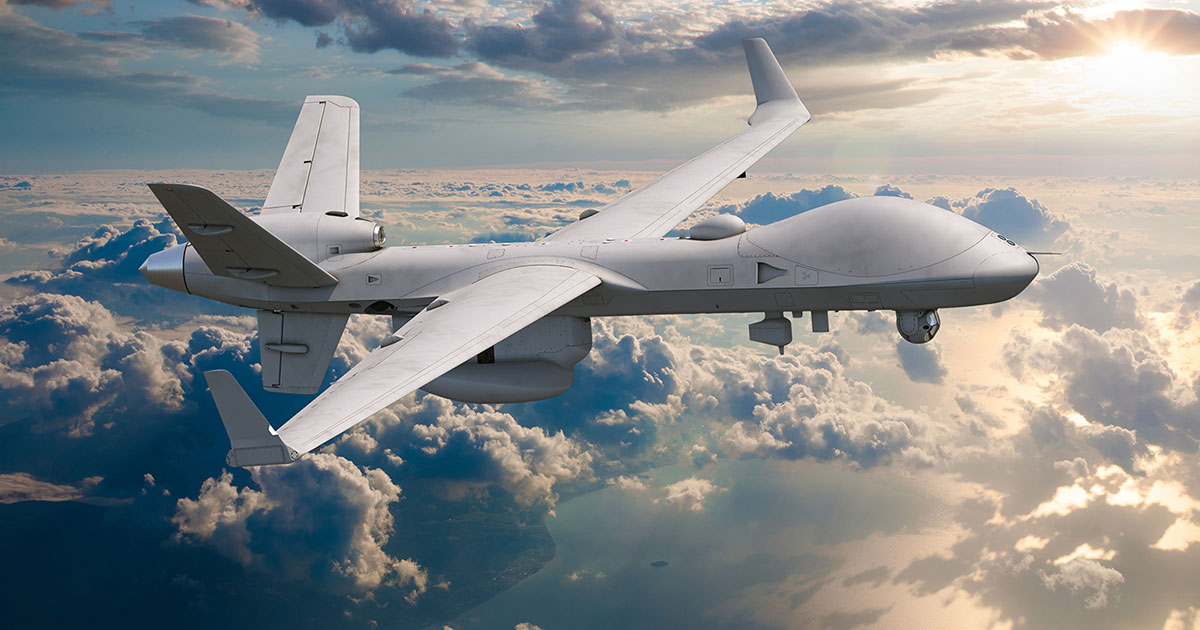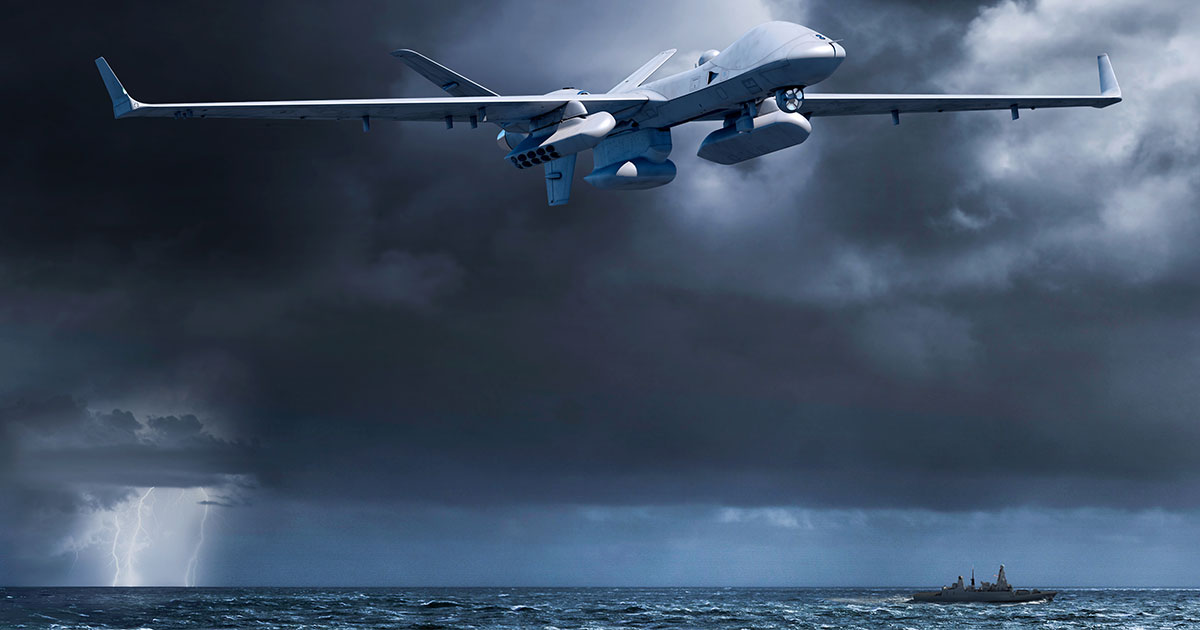
MQ-9B SeaGuardian: Ready Today for Peer Competition in the Maritime Domain
The coming decades will bring unprecedented challenges to American sea power.
The U.S. Navy and its allies have never faced a range of threats quite like those arrayed in opposition to peace and stability on the world’s oceans. That’s why Washington and its allies are rethinking the right mix for their own forces to meet the task.
Unmanned systems will play a greater role than ever before at every level, especially those providing maritime domain awareness. Nearly every aspect of sea power flows from it: intelligence, surveillance, and reconnaissance data tell U.S. and allied commanders where to focus their operations, what kind of response to employ, and when the right moment is to take action.
The MQ-9B SeaGuardian® manufactured by San Diego-based General Atomics Aeronautical Systems, Inc. (GA-ASI) is tailor-made to support the U.S. Navy, its allies, and partners against peer or near-peer forces. As the most capable aircraft of its kind, it’s revolutionizing what’s possible for Anti-Submarine Warfare (ASW), Anti-Surface Warfare (ASuW), and Electronic Warfare in support of carrier strike groups, surface action groups, amphibious ready groups, and international forces.
Proven yet innovative
The SeaGuardian springs from the world’s most proven family of remotely piloted aircraft — the more than 1,000 Predator-series multi-mission aircraft that have logged roughly 8 million operational hours, much of that in combat. And yet the MQ-9B SeaGuardian is a wholly new aircraft, one that stands on the foundation of all those predecessors and experiences, but which is its own more advanced and more capable platform.
SeaGuardian is larger, can fly longer, cover greater distances, carry more payloads, and has better capabilities than anything else in its class. On its own, it’s the world’s most sophisticated medium-altitude, long-endurance unmanned aircraft. When meshed with the Navy-Marine Corps team and its allies, it serves as a force multiplier of uncommon value.
SeaGuardian can extend the eyes and ears of a strike group, verifying that choke points or other critical passages ahead of the main force are clear of hostile units. The aircraft can extend the sensing and reach of a large human-crewed maritime patrol aircraft, giving commanders huge flexibility in how they posture their air units — and affording the potential for big cost-savings as well.
MQ-9B can provide roughly 80 percent of the capability of a large human-flown maritime patrol aircraft at about 20 percent of its cost per hour. That makes it much more economical for navies to — for example — send out SeaGuardians to clear big volumes of air or sea and then, if anything of interest is discovered, vector in a human-crewed aircraft to save it the time, cost, and wear that it otherwise might have expended.
The SeaGuardian can support Navy missions with its onboard suite of sensing and intelligence capabilities and also take on board any number of special payloads to support mission needs. A 360-degree surface search radar, for example, provides wide and detailed surface domain awareness. Communications payloads let the aircraft serve as a major networking node.
Anti-submarine warfare
And MQ-9B SeaGuardian is the only platform of its kind that can carry, release, and monitor sonobuoys — indeed, the platform has revolutionized anti-submarine warfare.
In demonstrations and exercises, the SeaGuardian has proven repeatedly how well it can integrate with U.S. Navy and international forces. With a maximum endurance of around 30 hours in some configurations, the aircraft can supply a strike group or other commander with intelligence of a richness and quantity that nothing else can, including overhead assets. MQ-9B can detect and identify a vessel of interest and then preserve custody of that target for hours. With other aircraft working in teams, navies or coast guard officials can watch a key waterway or a target of interest for as long as they want.

In exercises with the U.S. Navy off the West Coast of the United States, the SeaGuardian has shown it can release sonobuoys, detect submarines, and monitor them over time. The SeaGuardian also can monitor sonobuoys released by other aircraft, increasing the utility of integrating unmanned platforms with the Navy’s existing human-crewed ones.
The aircraft performs with a high degree of autonomy and with human controllers who can operate it via satellite from anywhere. This means that SeaGuardian’s human crew might be sited with a shore commander’s headquarters to enable quick and convenient sharing of intelligence while increasing dwell time for our Navy operators. The aircraft, meanwhile, can operate with a small maintenance footprint from more fields than ever.
MQ-9B’s larger fuselage and longer wingspan mean that it can access more bases with shorter runways than earlier models of unmanned surveillance aircraft. Now an aircraft can take off from base A, fly to base B to refuel and rearm, then fly to base C and so on — never needing to return to its point of origin and thereby greatly complicating the targeting problem for any adversary.
All the while, SeaGuardian’s proprietary Detect and Avoid System, developed by GA-ASI, means that it’s certifiable by civil aviation authorities and enables the aircraft to integrate with normal aviation traffic. Air traffic authorities don’t need to set aside special corridors of airspace or require an escort aircraft in order for MQ-9B to take off and transit in the way earlier models once did. Users can treat the SeaGuardian the way they do a standard human-crewed aircraft and just file a flight plan and fly. Controllers are in contact with air traffic control and other authorities by radio just like the pilots of an older-model aircraft.
This range of versatility, endurance, capability, and growth margin means that the U.S. military and other sophisticated users have barely scratched the surface of what’s possible with MQ-9B SeaGuardian and its sibling, the SkyGuardian®. The earlier era of simpler, counterterrorism-focused operations overland is giving way to a new chapter of multi-domain integration, maritime domain awareness, and myriad other new applications.
These range from novel missions such as wildlife and ecological monitoring to customs enforcement, lifesaving, and security. And in the context of the coming decades, it means MQ-9B is ready to serve as the mainstay unmanned aircraft for the Navy’s challenges with peer competitors.